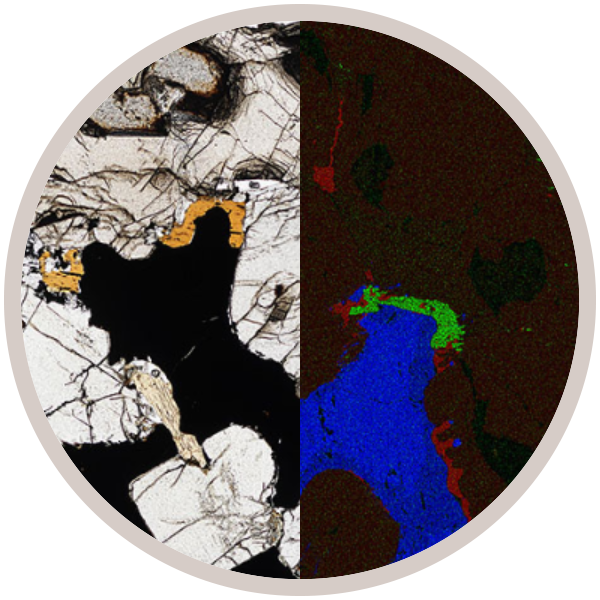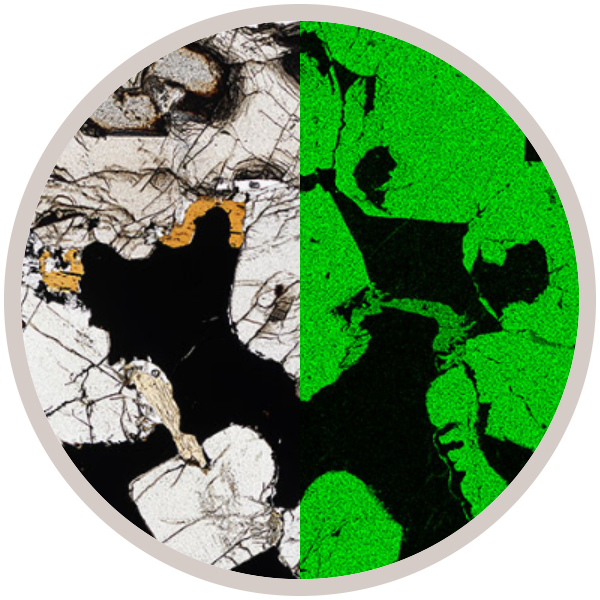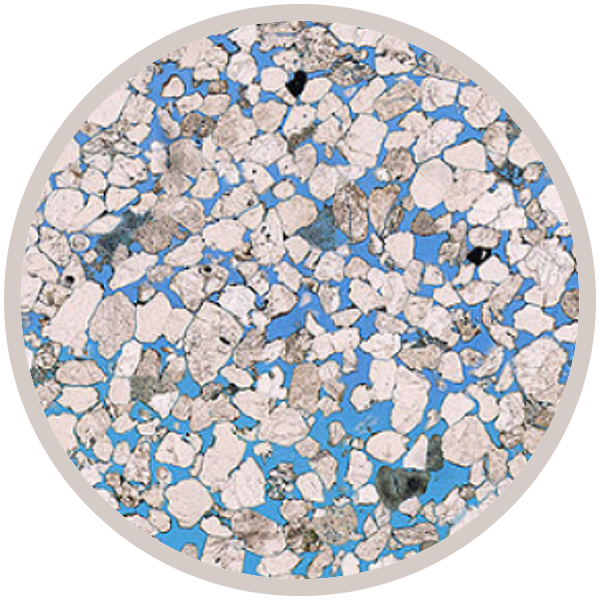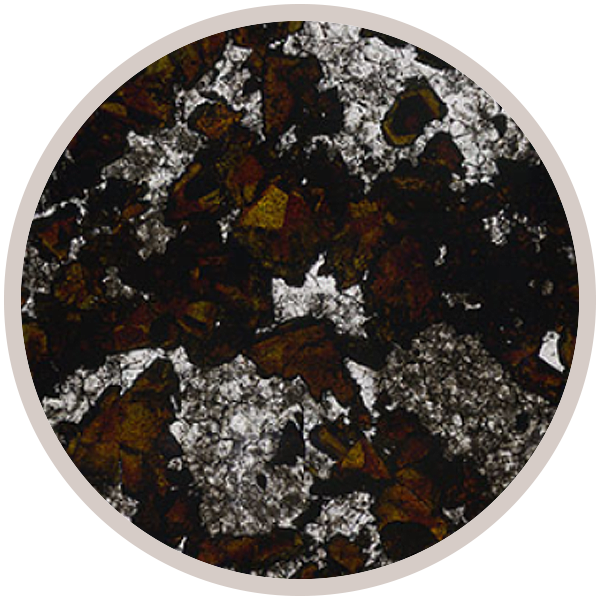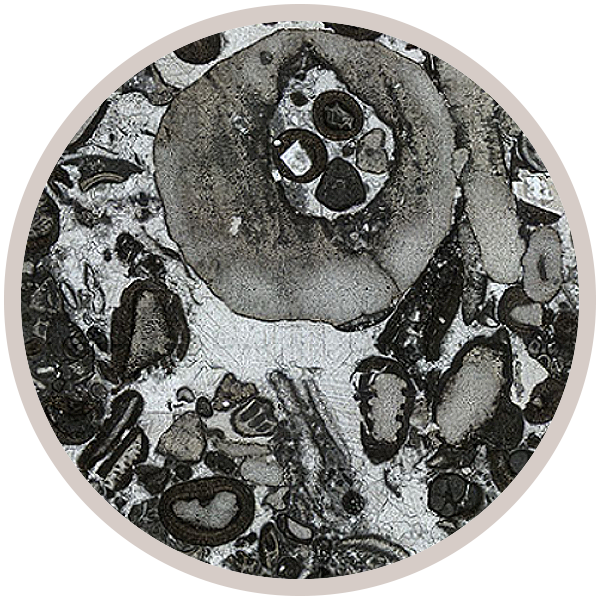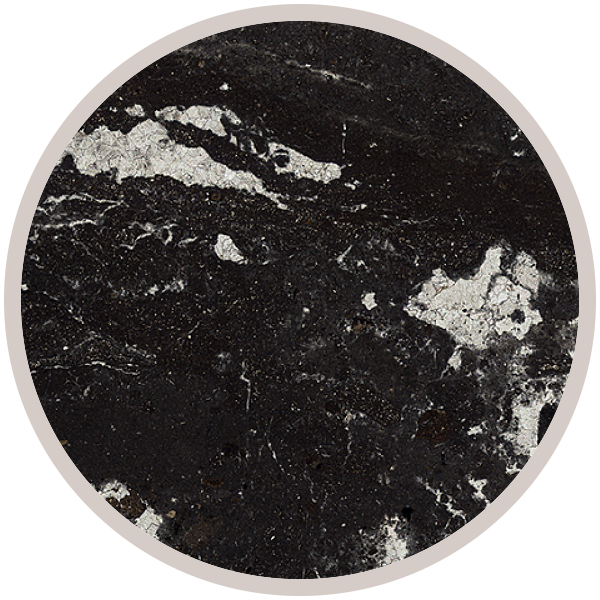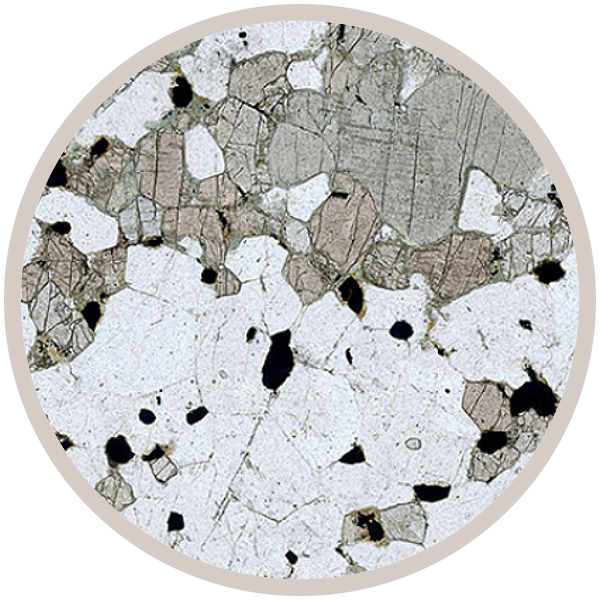
Fact sheet
Pyroxene granulite is a water poor metabasite composed of ortho- and clinopyroxene and plagioclase, and it forms only under the highest range of metamorphic temperatures (at higher temperatures one would be beyond metamorphism and in the realm of magmatism). This rock comes from the Lewisian Complex, which is part of the ancient Laurentian craton (most of which in now on the far side of the Atlantic Ocean. Metamorphism occurred about 2400 Ma in an event that has been called the Scourian orogeny. Most of the granulite facies gneisses of the Lewisian Complex were thoroughly recrystallized about 1700 Ma under amphibolite facies conditions (the Laxfordian orogeny), and it was at this time, perhaps, that the narrow border of hornblende developed on pyroxene grain boundaries in this rock.
A group of iCRAG members (UCC, TCD, NUIG and UCD) in partnership with The Open University have created a new collection of Irish rocks and associated learning materials for the Virtual Microscope of Earth Sciences.
The project which is entitled 'The Geoscience e-Laboratory (GeoLab): Developing Digital Teaching and Learning Resources for the Virtual Microscope' seeks to develop open access teaching resources in the form of interactive exercises and assessment rubrics for the Virtual Microscope. Find out more about the project at the GeoLab website.
The Collection was created using funding from the Faculty of Engineering, Mathematics and Science at Trinity College, Dublin, and the National Forum Teaching and Learning Enhancement Fund. One sample (Merensky Reef) showcasing x-ray element maps in addition to the usual PPL/XPL/REF images was funded by Prof. Balz Kamber's MetalIntelligence EU training network grant.

